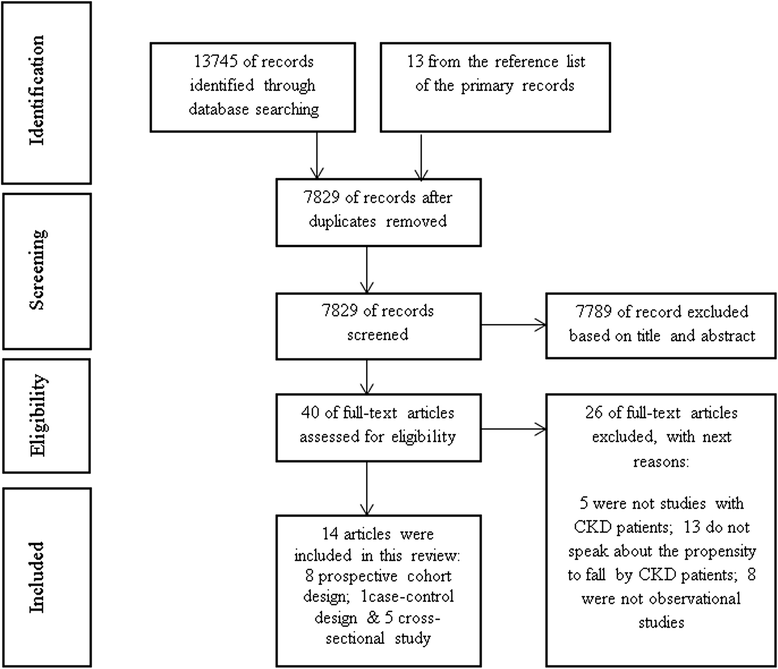Renal disease and accidental falls: a review of published evidence
- PMID: 26510510
- PMCID: PMC4625452
- DOI: 10.1186/s12882-015-0173-7
Renal disease and accidental falls: a review of published evidence
Abstract
Background: The pathogenesis of falling is complex, and identification of risk factors may be essential for prevention. The relationship between renal disease and falls is unclear, and the goal of this study was to collect the available evidence and investigate the relationship between accidental falls and renal dysfunction.
Methods: Electronic searches were performed in the MEDLINE, Scopus, Ovid SP and Web of Science databases to identify the appropriate literature. The themes used were: falls (combined in the title/abstract fall or falls or falling or faller* or fallen or slip* or trip* or (MeSH) accidental falls) and renal insufficiency (chronic or renal insufficiency or kidney diseases combined in title/abstract renal disease* or kidney disease* or renal insufficiency or kidney insufficiency or kidney failure or renal failure or MeSH renal insufficiency, chronic or renal insufficiency or kidney diseases). The incidence, risk factors, complications, and characteristics of the falls were analyzed.
Results: Eight prospective cohorts including five cross-sectional studies, and one case-control study were identified. No randomized controlled studies were found. The incidence of falls in chronic kidney disease patients ranged between 1.18 and 1.60 fall/patient year. These were frequent in frail older adults on hemodialysis treatment. Falling relapses in the same group of patients caused serious consequences. Data on pre-end stage renal disease (ESRD) were scarce.
Conclusions: The risk of falling appears to be common in patients with renal dysfunction especially in older adults undergoing hemodialysis. On the other hand, we could not find any conclusive data on pre-ESRD patients.
Figures
References
-
- Jha V, Wang AY, Wang H. The impact of CKD identification in large countries: The burden of illness. Nephrol Dial Transplant. 2012;27(Suppl 3):iii32–iii38. - PubMed
-
- Rubenstein LZ. Falls in older people: Epidemiology, risk factors and strategies for prevention. Age Ageing. 2006;35(Suppl 2):ii37–ii41. - PubMed
Publication types
MeSH terms
LinkOut - more resources
Full Text Sources
Other Literature Sources
Medical


